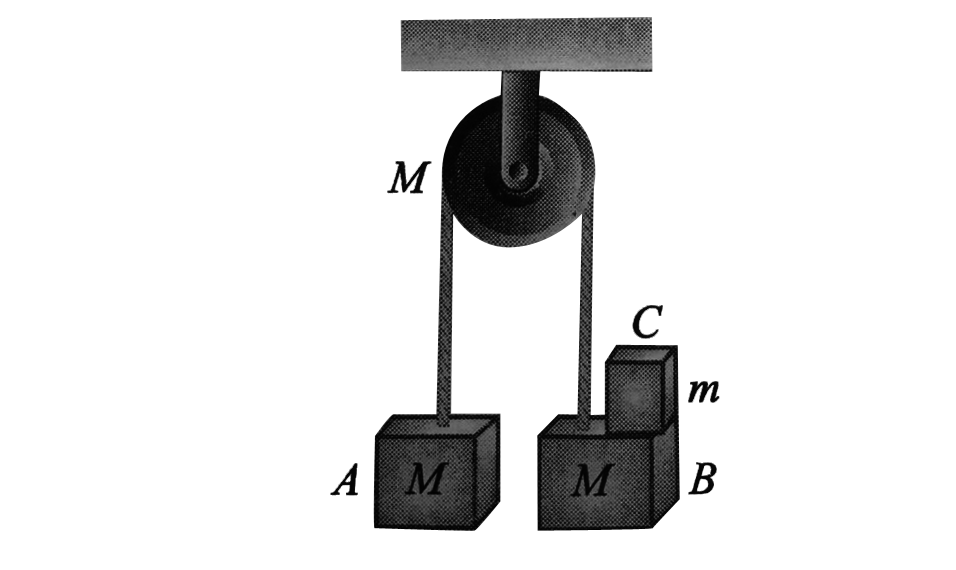
For the following system shown assume that pulley is frictionless, string is massless (m remains on M),
Q. The force on the ceiling is
(M+m)mg2M+m
(6M+5m)mgM+m
(M+m)mgM+m
(6M+5m)Mg2M+m
The correct Answer is:D
free body diagram C' block
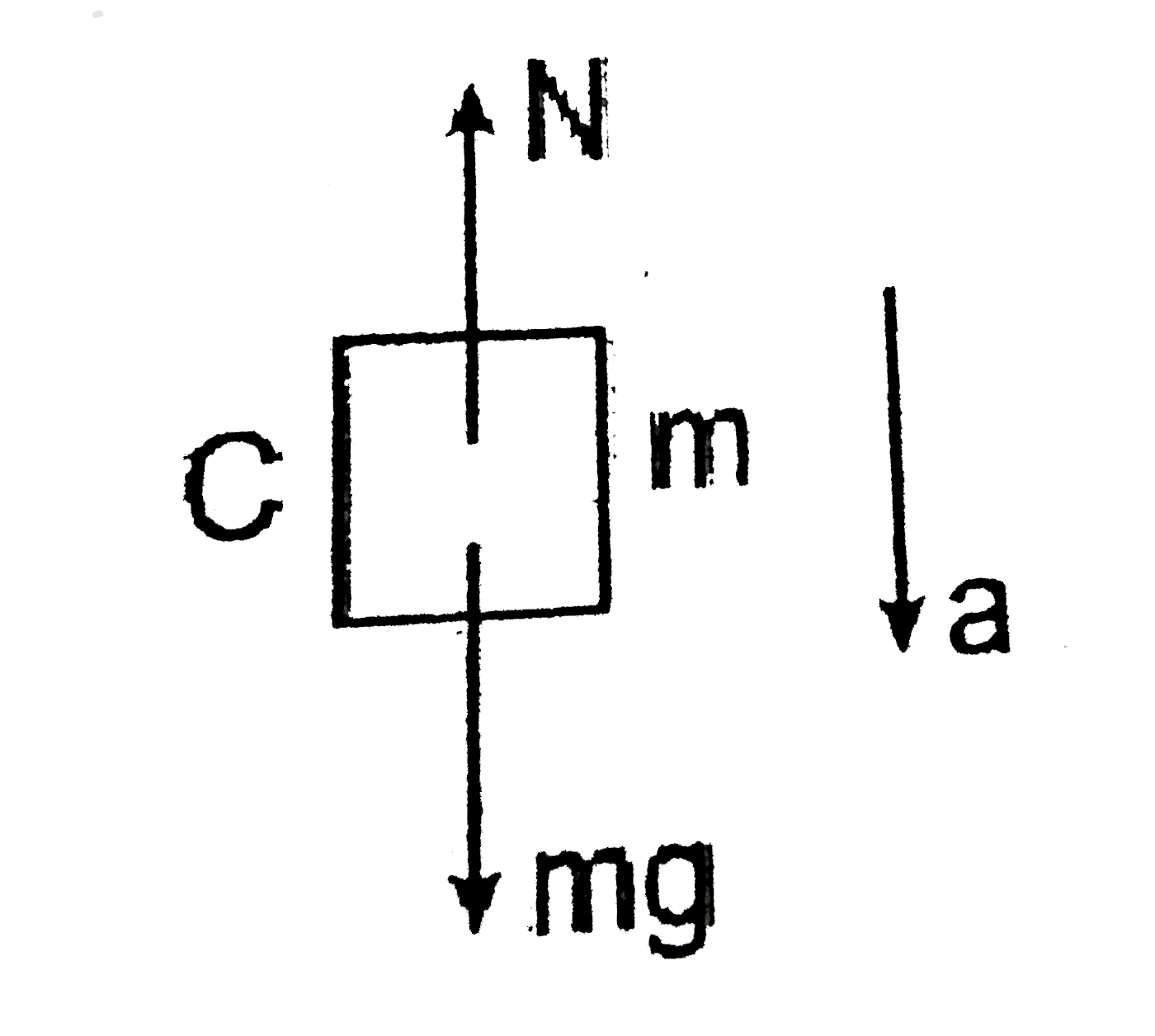
mg−N=ma
∴N=m(g−mg2M+m)N=2Mmg2M+m
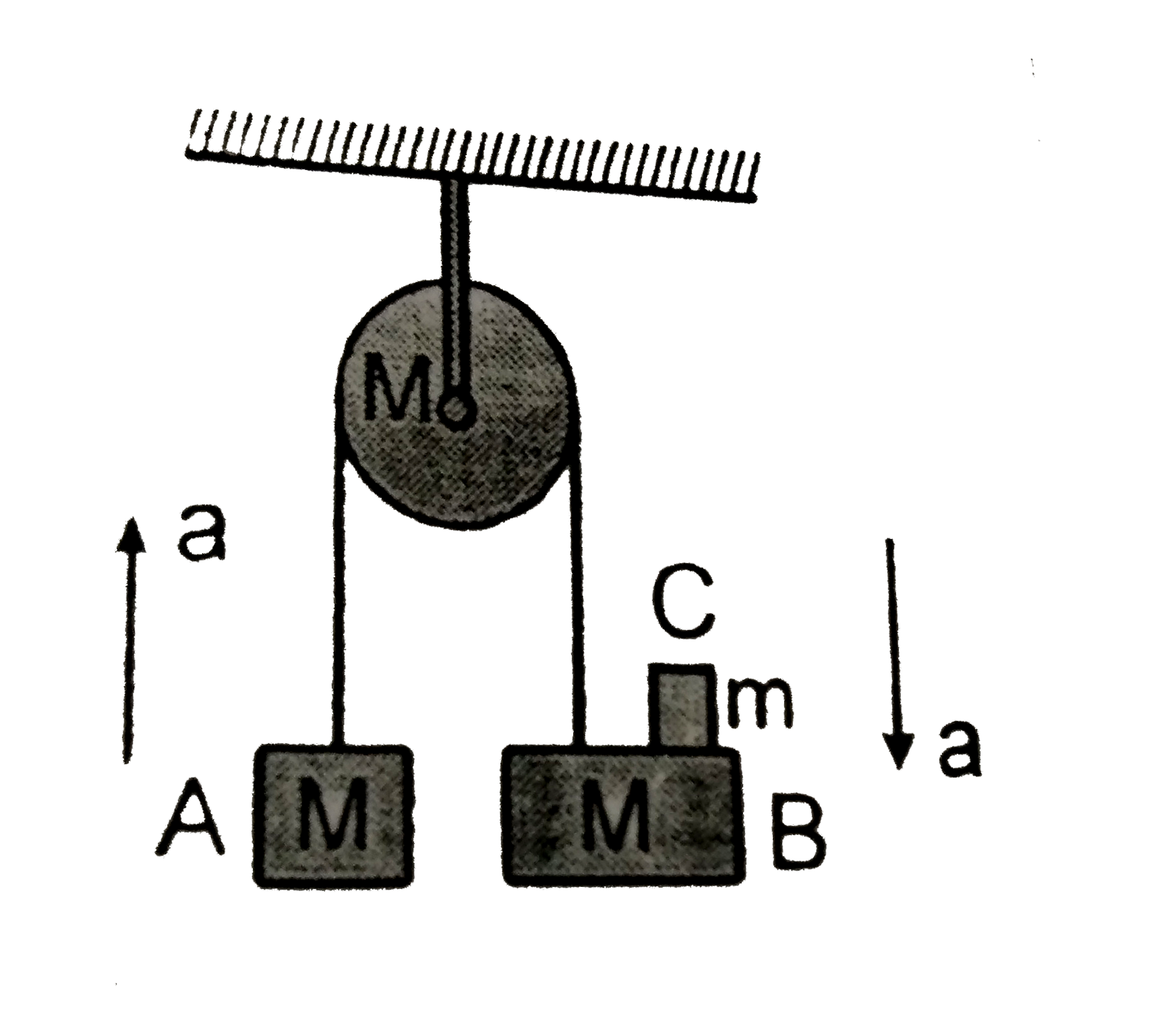
By newtons law on system of (A,B,C)
5.(M+m−m)g=(2M+m)a
∴a=mg2M+m
Similar Questions
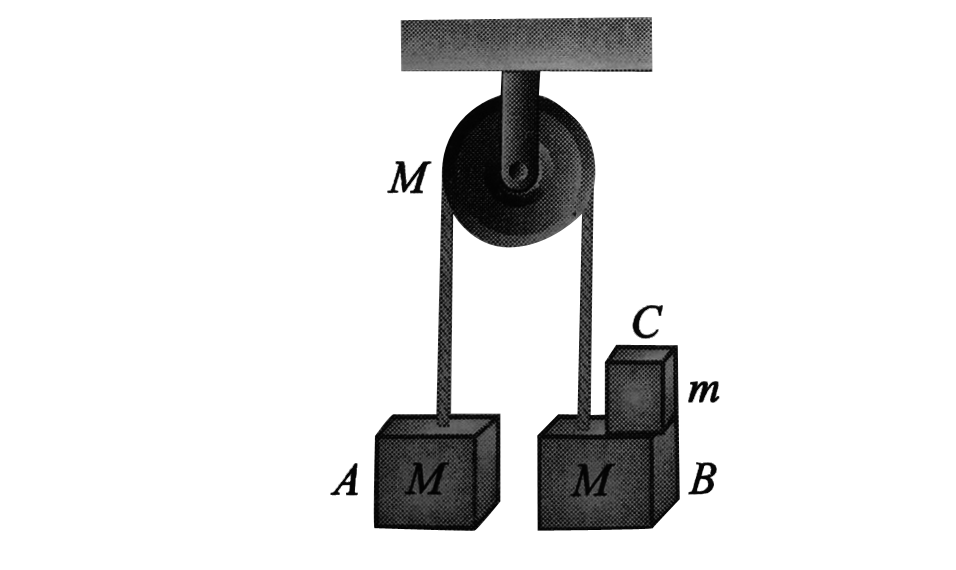
For the following system shown assume that pulley is frictionless, string is massless (m remains on M),
Q. The acceleration of the block A is
View Solution
For the following system shown assume that pulley is frictionless, string is massless (m remains on M),
Q. The acceleration of the block A is
View Solution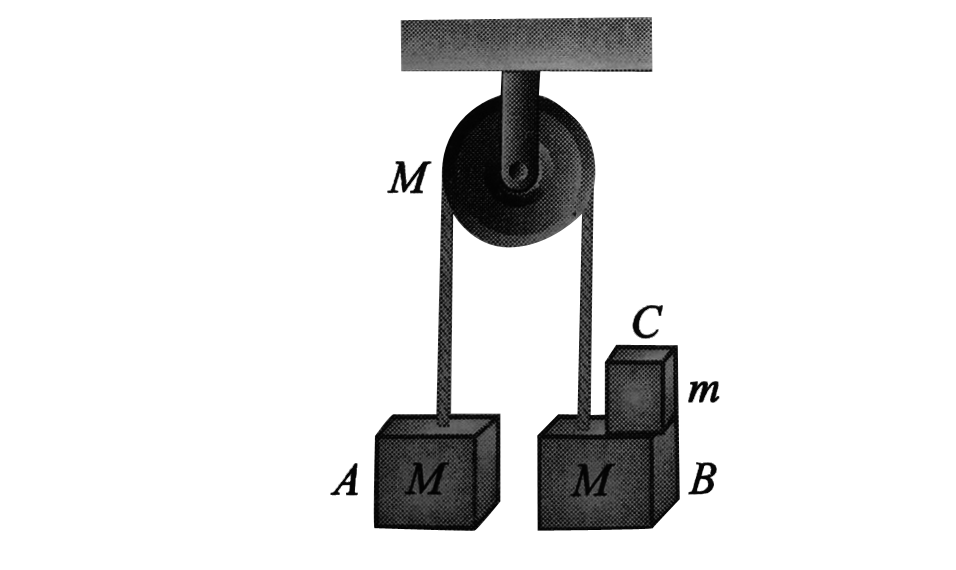
For the following system shown assume that pulley is frictionless, string is massless (m remains on M),
Q. Normal reaction on m is (force on C due to B)
View Solution
For the following system shown assume that pulley is frictionless, string is massless (m remains on M),
Q. Normal reaction on m is (force on C due to B)
View SolutionThe time period of block of mass m is (Assume pulleys and string are massless)
_PHY_E06_345_Q01.png) .
.
View SolutionIn the system shown all the surfaces are frictionless while pulley and string are massless. The mass of block A is 2m and that of block B is m. The acceleration of block B immediately after system is released from rest is
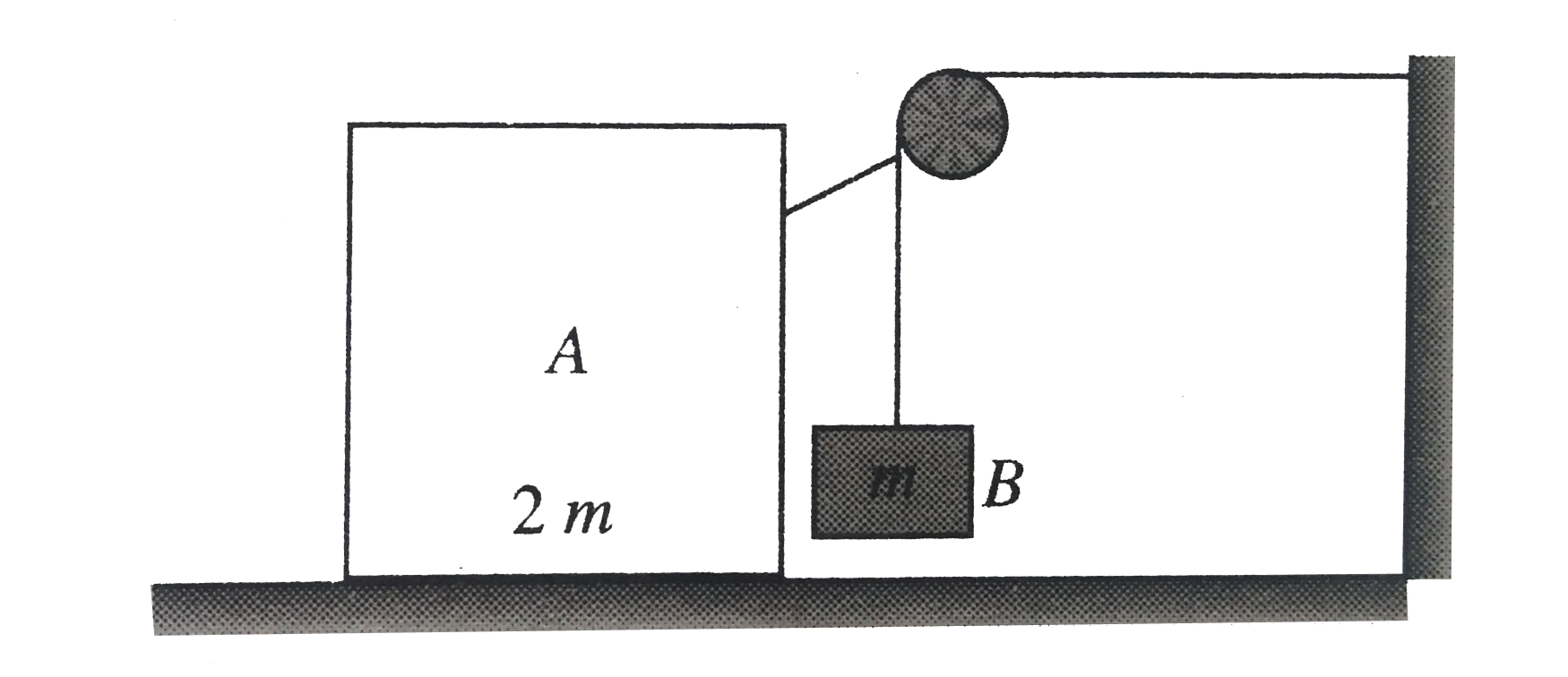
View SolutionIn the arrangement shown, the pulleys and strings are massless. The acceleration of block B is :
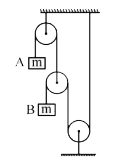
View SolutionA mass M is suspended as shown in fig. The system is in equilibrium. Assume pulleys to be massless. K is the force constant of the spring.
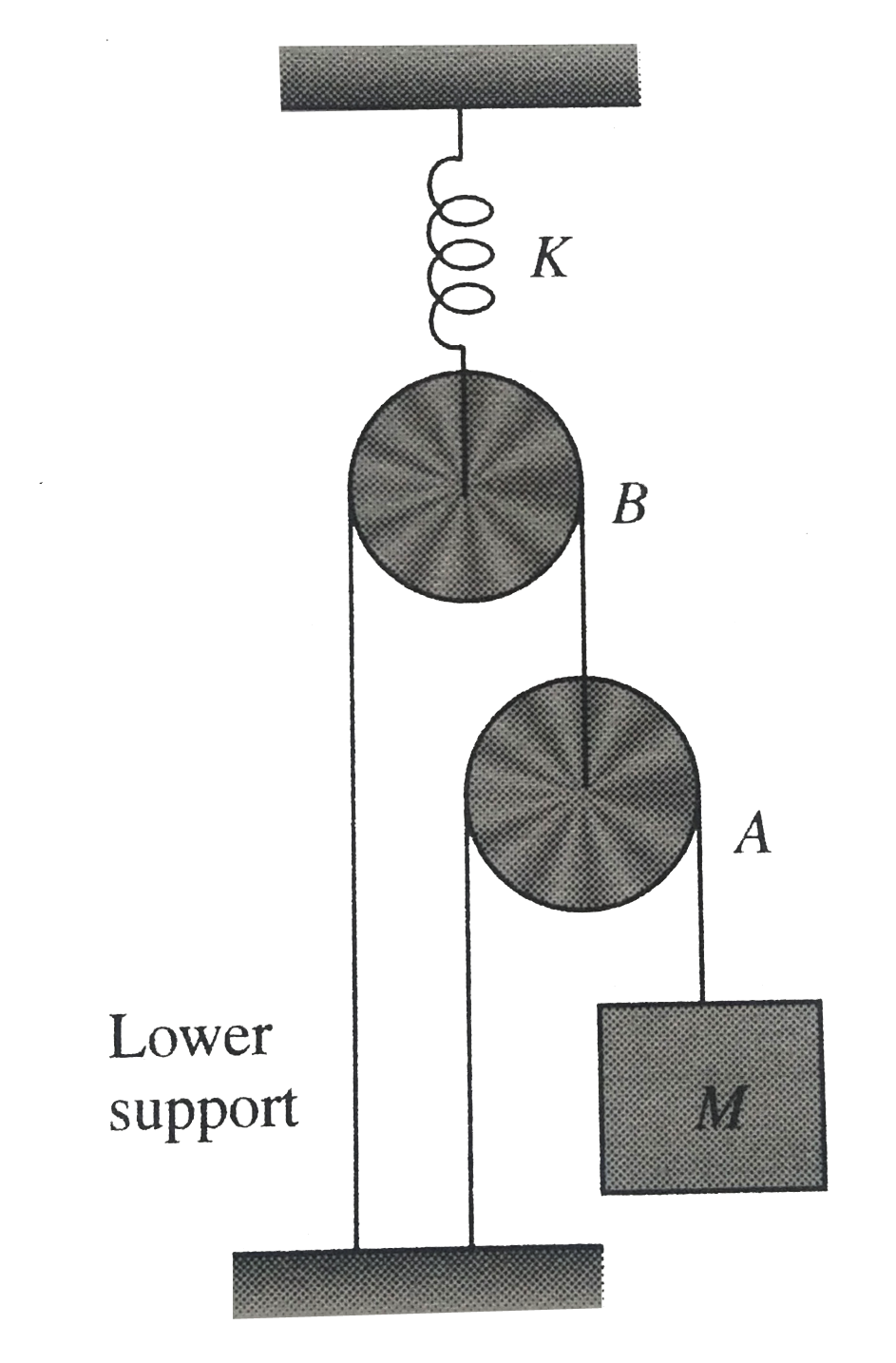
The extension produced in the spring is given by
View Solution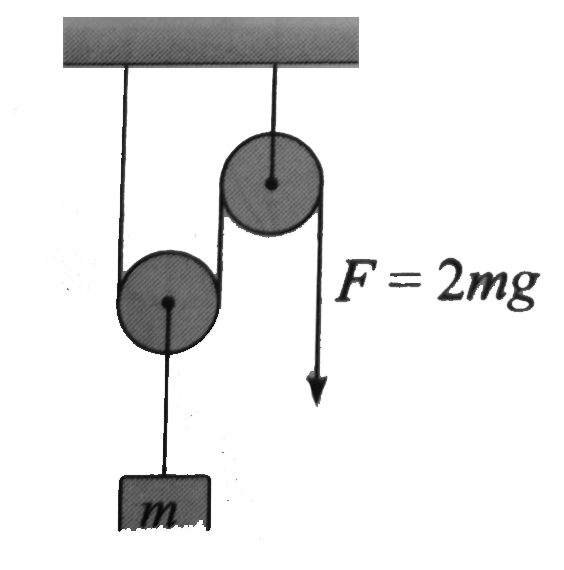
In the shown mass pulley system, pulleys and string are massless. The one end of the string is pulleed by the force F=2mg. The acceleration of the block will be
View Solution
In the shown mass pulley system, pulleys and string are massless. The one end of the string is pulleed by the force F=2mg. The acceleration of the block will be
View Solution
